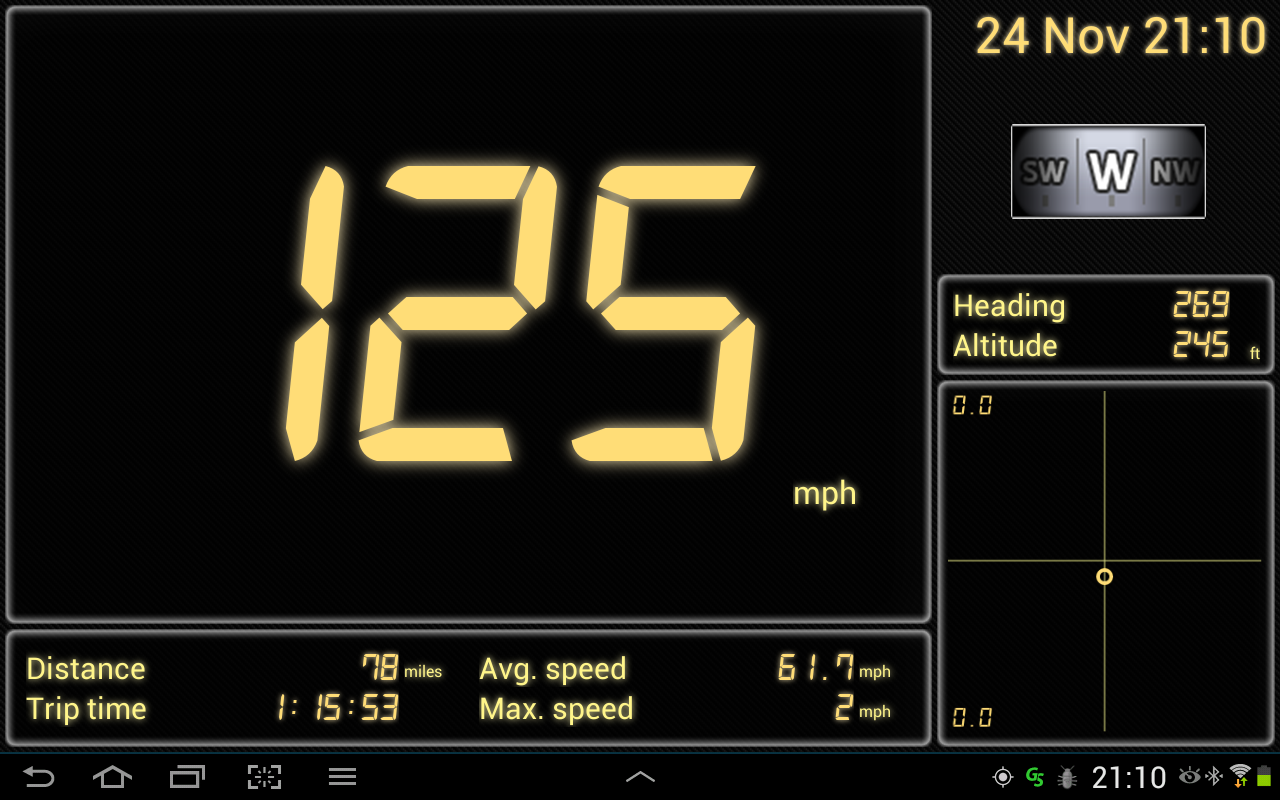Comprehensive Guide to GPS Speedometers: Everything You Need to Know
In today's age of technological marvels, instruments and tools that were once purely mechanical have taken on new digital identities, providing more accurate and expansive capabilities. One such device is the GPS speedometer. If you've ever wondered about its workings or contemplated its advantages, this guide will shed light on all your queries.


1. Introduction: What is a GPS Speedometer?
A GPS speedometer is a modern device used to measure the speed of moving objects, predominantly vehicles, by using the Global Positioning System (GPS). Unlike traditional speedometers, which rely on wheel rotations or propeller revolutions, GPS speedometers measure speed by calculating the change in position over time using satellite signals.2. The Science Behind GPS Speedometers
Satellite Constellation: The GPS system is composed of a constellation of 24 satellites in space. These satellites continuously transmit signals, which are received by devices on the Earth's surface. Triangulation Process: For a GPS speedometer to work, it needs signals from at least three satellites. By knowing the distance from each satellite and triangulating these distances, the device can determine its current position. Calculating Speed: Once the device knows its position, it can calculate speed by monitoring the change in position over a set interval, usually a fraction of a second. This is done repeatedly to provide real-time speed data.
3. Benefits of Using a GPS Speedometer
- Accuracy: GPS speedometers tend to be more accurate than traditional mechanical speedometers because they aren't affected by factors like tire size, mechanical wear, or calibration issues.
- Versatility: They can be used in a variety of vehicles and situations, from cars and boats to airplanes, without the need for any physical connection.
- Real-time Data: Apart from speed, these devices often provide other real-time data such as altitude, latitude, and longitude, enhancing their utility.
- Easy Installation: They are generally easy to install and don’t require intricate setups or calibrations.
4. Potential Limitations
1. Signal Interference
- Urban Canyons and Tall Buildings: In densely constructed urban environments, tall buildings can create 'urban canyons' where satellite signals bounce off buildings, potentially causing a phenomenon known as 'multi-path interference'. This can lead to momentary inaccuracies in speed readings.
- Natural Obstructions: Mountains, dense forests, and even deep valleys can obstruct the direct line-of-sight to satellites. In such terrains, the speedometer might struggle to provide a consistent and accurate speed reading.
- Tunnels and Underground: Since the GPS requires a line of sight to the sky, tunnels or being underground can entirely disrupt the connection, causing the speedometer to temporarily stop functioning.
2. Initial Lag and Time to First Fix (TTFF)
- Cold Start: When a GPS speedometer is turned on after being off for an extended period or in a new location, it goes through a 'cold start'. In this state, it must download data about satellite positions, leading to a longer initial connection time.
- Warm Start: If the device was recently used, it might go through a 'warm start', where it already has some satellite data in its memory. The connection is typically faster in this mode, but there might still be a slight delay.
- Obstructed Start: If you initiate the device in a location with poor satellite visibility, like indoors or under thick tree cover, it may take longer to achieve a reliable connection. It's always best to start the device in an open area to reduce the initial lag.
- Atmospheric Delays: Sometimes, the satellite signals can be delayed due to atmospheric conditions, especially the ionosphere. Modern GPS devices often have corrections for these delays, but under certain conditions, it might still introduce slight inaccuracies.

5. GPS Speedometer Vs. Traditional Speedometer
Traditional speedometers use the vehicle's drivetrain to measure speed, which can introduce inaccuracies due to factors like tire wear, gear changes, and calibration drift. GPS speedometers bypass these potential error sources by relying on external satellite data, making them generally more reliable. However, in situations where satellite signals are weak or obstructed, traditional speedometers can offer a consistent backup.6. Choosing the Right GPS Speedometer for Your Needs
If you're considering investing in a GPS speedometer, consider:- Display Options: Digital vs. Analog.
- Additional Features: Some models come with added features like trip logs, mileage counters, and more.
- Compatibility: Ensure the speedometer is compatible with your vehicle or mode of transportation.
- Price: While generally affordable, the range of features can influence the cost.
